Health and wellness trends continue to drive growth in the functional food and beverage industry, consumers are increasingly choosing foods with added nutritional value for them to meet their health goals. Delve into this blog to understand the shift in consumer trends and the importance of scientifically validating your health product to ensure its entry to market is successful.
Cognitive Health Trends
In addition to facilitating treatment for those suffering from recurrent and severe mental illnesses, a shift in attitudes has helped to foster a culture of preventative care, where many consumers consider it important to prioritize their mental wellness in addition to their physical wellness and take action to deal with stress, depression and anxiety.
The pandemic has also accelerated the market growth of self-care products and optimization of mental wellness. A report from Euromonitor highlights 4 key factors:
- Increase of incidence of depression and anxiety
- Rising awareness of mental health issues
- Shift towards preventative healthcare
- Moving to holistic approach to wellness
The Global Wellness Institute report defines four sub-markets (2019 data):
1) senses, spaces and sleep ($49.5 billion),
2) brain-boosting nutraceuticals & botanicals ($34.8 billion),
3) self-improvement ($33.6 billion),
4) meditation and mindfulness ($2.9 billion). As per this report, brain-boosting nutraceuticals & botanicals are the second submarket by size in the Global Mental Wellness market
The strategies that consumers are following in this segment may vary depending on demographic and psychographic factors. The scope of this report is to highlight the trends on the Functional Food, Beverages and supplements for preventative brain, cognitive and mental health, also known as nootropics. The variety of cognitive health products range from: Food, Beverages, Supplements, prescription drugs and Do it Yourself packs. Different applications arise depending if the product aims to treat a condition or prevent it. This reports scope will focus on preventative brain health products.
The above applications vary depending on the age but also on the lifestyle. A recent report from Euromonitor described the existence of two groups:
- The first group: small but much more intensely interested group that has a higher tolerance for the use of unregulated drugs and/or supplements. This group is familiar with the term “nootropics”, they tend to skew younger and be strongly influenced by the ethos of Silicon Valley and the idea of “biohacking”. They will drive innovation, but they are relatively small.
- The second group: spills into products aimed at the more mainstream consumer, who is also interested in cognitive boosts but is not willing to accept the same level of risk as the previous group. Supplements certainly have a role to play, particularly if they have strong natural positioning, but the most exciting potential is in food and beverage products. These are only just starting to seriously target the cognition space and will be a key area of product development for new functional products.
Cognitive health innovations
The main innovation on this category will be driven by:
- Foods: Bars, Gum & Superfoods
- Beverages: Coffee, Tea & Energy drinks
-
Trends in Foods for cognitive health
In broad terms, nootropic foods can be broken into two categories: short term boost from products such as gum or snack bars (another area of food that attracts a high level of interest when it comes to nootropics), versus long term benefits.
In the short-term boost category, gum or snack bars are seeing the most innovation due to their light, on the go usage as well as some evidence that gum specifically may be an ideal delivery vessel for many nootropic ingredients given the speed at which they are absorbed by the mouth. The ingredients found in cognitive boosting gum tend to be the same as found in beverages (caffeine, L theanine, ginkgo biloba, etc), but gum offers some benefits that beverages do not.
There is some evidence that chewing a product can serve as an enhancer even before the effects of any ingredients in this thing being chewed are being absorbed. Additionally, some studies suggest the absorption of nootropic ingredients is more efficient when done in the mouth rather than lower in the digestive tract (as with a pill). Meaning gum is an especially effective delivery method for nootropics.
Straight from our experts: Psyhobiotics
Psychobiotics are bacteria which when ingested can have a positive mental health benefit. There are now a number of promising bacteria emerging which may be of value in treating anxiety and depression. Among the possible approaches, the food industry can benefit from the microbiome research outcomes.
Professor Ted Dinan stated:
As a psychiatrist I find the alterations described in the gut microbiota in patients with depression as very significant. It raises novel therapeutic possibilities. There is for example increasing evidence that a Mediterranean diet, probably acting through the gut microbiota, can protect against the emergence of depression and also enable therapies for depression to work more effectively. Further research is required”. “ Frailty in the elderly is associated with decreased microbial diversity. A major challenge for the food industry is to produce food that will increase microbial diversity and stave off frailty as people age. Medical foods are also likely to emerge for other conditions such as depression”. “ We will see, eventually, highly refined personalized nutrition regimes that will have a major role in disease prevention”.
References:
AARP Brain Health and Dietary Supplements Survey, 2019
Grand View Research, Inc., 2020
GWI Global Wellness Economy Monitor, 2018
Onaolapo, A., Obelawo, A. and Onaolapo, O., 2019. Brain Ageing, Cognition and Diet: A Review of the Emerging Roles of Food-Based Nootropics in Mitigating Age-related Memory Decline. Current Aging Science, 12(1), pp.2-14.
The Global Wellness Summit, 2020 Global Wellness Trends Report

